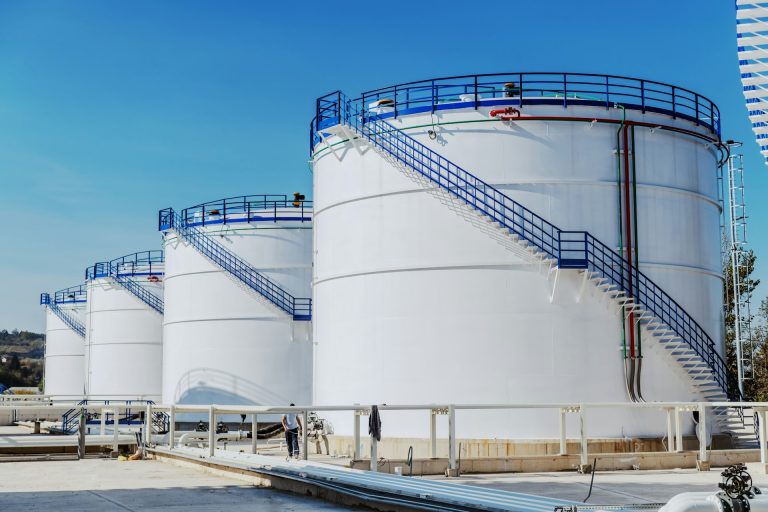Launching an online fashion store is easier than ever in today’s digital-first world, but how do you make it successful? That’s a different game altogether. With thousands of competitors, a flood of ads, and ever-evolving customer preferences, fashion entrepreneurs must stay ahead of the curve to thrive.
Marketing your online fashion store goes far beyond simply posting pretty pictures or offering seasonal discounts. It requires a strategic blend of creativity, technology, and customer-centricity. To help you stand out and scale, we’ve curated 25 powerful marketing ideas, complete with real-world examples and case studies to inspire your next campaign.
Pro Tip: If you’re just starting out or looking to revamp your store’s functionality, partnering with a reliable eCommerce development company can ensure your online platform is optimized for performance, conversions, and growth.
Marketing Ideas to Create Your Online Fashion Store
1. Run a Seasonal Lookbook Campaign
Why it works: Lookbooks help visually communicate your brand’s style, guide customers on outfit coordination, and drive multi-product purchases.
How to execute:
- Curate 5-10 key looks per season.
- Use models or influencers to showcase how each piece is worn.
- Share the lookbook on your website, social media, and through email campaigns.
Example: Zara constantly refreshes its online lookbook to align with seasonal trends and style transitions. It works as both a shopping guide and a brand storytelling tool.
2. Partner with Influencers to Build Brand Trust
Why it works: Influencers lend authenticity to your brand and help you tap into their follower base.
How to execute:
- Identify influencers whose followers match your target demographics.
- Offer free products or paid collaborations.
- Track ROI via affiliate links or discount codes.
Case Study: Fashion Nova went from a small Instagram boutique to a household name by partnering with thousands of micro-influencers. Their influencer-first model created a cult following.
3. Launch a Branded Hashtag UGC Campaign
Why it works: User-generated content builds trust, showcases real-life usage, and turns customers into brand advocates.
How to execute:
- Create a branded hashtag (e.g., #StyledBy[YourBrand]).
- Encourage customers to post their outfits.
- Repost UGC across your marketing channels.
Example: ASOS’s #AsSeenOnMe campaign encouraged buyers to share their fashion finds, creating thousands of free, authentic content pieces.
4. Implement a Virtual Try-On Feature
Why it works: It reduces hesitation, increases conversions, and decreases return rates.
How to execute:
- Use AR tech tools (like Vue.ai or Zeekit) to offer digital try-ons.
- Promote the feature across product pages and ads.
Case Study: Modcloth integrated virtual try-on solutions to help users visualize outfits, which led to a noticeable uptick in conversions and customer satisfaction.
5. Send Personalized Email Style Guides
Why it works: Targeted content boosts engagement and makes customers feel seen.
How to execute:
- Use segmentation tools to group customers by preferences.
- Send style suggestions based on past purchases or quiz results.
Example: Revolve delivers weekly curated style edits via email based on browsing behavior and past purchases.
6. Create Limited-Time Capsule Collections
Why it works: It drives urgency and exclusivity.
How to execute:
- Partner with artists or celebrities to create a mini collection.
- Promote it as a “limited edition” with a countdown.
Case Study: H&M’s designer collaborations (e.g., with Balmain or Moschino) consistently generate massive hype and sell out within hours.
7. Introduce “Shop the Look” Features
Why it works: It simplifies shopping and increases the average order value.
How to execute:
- Display full outfits on models.
- Link all pieces underneath with a “Buy the Entire Look” option.
Example: Boohoo and PrettyLittleThing offer seamless outfit-based shopping experiences across product pages and email newsletters.
8. Promote Your Ethical & Sustainable Practices
Why it works: Eco-conscious consumers are growing and willing to pay a premium for sustainable fashion.
How to execute:
- Share your production story, materials used, and ethical sourcing process.
- Create content around slow fashion, upcycling, or recycling.
Case Study: Patagonia’s famous “Don’t Buy This Jacket” campaign increased awareness about mindful consumption—ironically driving more brand loyalty and revenue.
9. Use Instagram Reels & TikTok Trends
Why it works: Short-form video content has massive reach and engagement, especially among Gen Z.
How to execute:
- Post “OOTD” (Outfit of the Day), behind-the-scenes videos, and trend-based transitions.
- Use trending audio and challenges to increase reach.
Example: PrettyLittleThing utilizes Reels daily to showcase outfits in real-world settings, boosting relatability.
10. Recover Abandoned Carts with Style Suggestions
Why it works: Personalized nudges can recapture lost sales.
How to execute:
- Send emails featuring the abandoned item styled with other products.
- Offer limited-time discounts to nudge conversions.
Example: Nasty Gal uses cheeky, fashion-forward cart recovery emails that reflect their edgy brand voice.
11. Host Giveaways with Complementary Brands
Why it works: It expands reach and taps into new audiences without high costs.
How to execute:
- Partner with a beauty, lifestyle, or jewelry brand.
- Offer bundled prizes and promote via both platforms.
Case Study: Forever 21 x ColourPop giveaways helped increase followers, build email lists, and create buzz.
12. Add a Fashion Personality Quiz Funnel
Why it works: It creates an engaging, personalized shopping experience.
How to execute:
- Design a “What’s Your Style Type?” quiz using tools like Typeform or Outgrow.
- Use answers to recommend products and collect email leads.
Example: Stitch Fix uses style quizzes to personalize selections, resulting in higher customer satisfaction and repeat purchases.
13. Launch a Loyalty & Rewards Program
Why it works: Increases lifetime value and repeat purchases.
How to execute:
- Offer points for purchases, shares, and reviews.
- Reward loyal customers with early access and exclusive drops.
Case Study: Sephora’s Beauty Insider program is one of the most successful loyalty models, and it’s easily replicable for fashion brands.
14. Build a Brand-Focused Community
Why it works: It fosters emotional connection and encourages word-of-mouth marketing.
How to execute:
- Create a Facebook group or Discord channel for fans.
- Share style tips, host Q&As, and let users interact.
Example: Girlfriend Collective built a loyal community by promoting inclusivity, body positivity, and open conversations.
15. Use Pinterest for Evergreen Traffic
Why it works: Pinterest acts as a visual search engine for fashion inspiration.
How to execute:
- Create boards for various looks: casual wear, party outfits, workwear, etc.
- Use rich pins and link back to your product pages.
Example: Anthropologie drives thousands of monthly visitors through styled Pinterest boards.
16. Host Online Styling Workshops
Why it works: It builds authority and trust while providing value.
How to execute:
- Host webinars or IG Lives with stylists discussing how to dress for different body types or occasions.
- Use these sessions to soft-sell featured products.
Case Study: During lockdowns, Net-a-Porter hosted virtual styling events to maintain engagement, successfully nurturing high-end customers.
17. Start a Blog or Style Resource Hub
Why it works: It drives organic traffic, builds SEO, and educates customers.
How to execute:
- Write about current fashion trends, how-to style guides, and product care tips.
- Optimize with keywords and internal links.
Example: Madewell’s blog, “The Madewell Musings,” serves as a content engine that connects storytelling with commerce.
18. Use Localized Ads for Regional Events
Why it works: Localization increases relevance and click-through rates.
How to execute:
- Use Facebook/Google Ads to run geo-targeted campaigns.
- Tie your creatives to local festivals or seasonal events.
Example: Promoting ethnic collections for Diwali or Lunar New Year using culturally relevant imagery boosts local conversion rates.
19. Launch a Subscription Fashion Box
Why it works: It creates recurring revenue and enhances convenience.
How to execute:
- Let users sign up for monthly fashion packages.
- Offer personalized selections based on style preferences.
Case Study: Le Tote built an entire business model around monthly fashion rentals and succeeded in creating loyal, long-term customers.
20. Introduce a Referral Program
Why it works: Turn happy customers into brand evangelists.
How to execute:
- Offer $10 off for both the referrer and referee.
- Use tools like ReferralCandy or Smile.io to manage it.
Example: ThredUp’s simple, effective referral system helped it gain thousands of new users with minimal advertising costs.
21. Display Reviews with Real-Life Photos
Why it works: Social proof boosts confidence and credibility.
How to execute:
- Ask buyers to submit reviews with pictures.
- Feature them prominently on product pages.
Example: Everlane pairs customer reviews with user-uploaded photos to show how items fit across different body types.
22. Run Segmented Email Campaigns
Why it works: Personalized messages lead to higher open rates and conversions.
How to execute:
- Group email subscribers based on gender, age, purchase history, and location.
- Send tailored promotions, content, and product recommendations.
Case Study: Bonobos saw a 33% uplift in click-through rate by segmenting email campaigns based on style preferences and past behavior.
23. Set Up an Affiliate Marketing Channel
Why it works: Low-risk, performance-based marketing at scale.
How to execute:
- List your affiliate program on platforms like ShareASale or Impact.
- Offer 10–20% commission per sale to influencers, bloggers, and fashion sites.
Example: Lulus built strong affiliate partnerships, contributing to their consistent online growth without heavy ad spend.
24. Leverage AI Chatbots for Style Assistance
Why it works: Customers often need real-time help while browsing—AI chatbots can act as personal stylists and improve conversion rates.
How to execute:
- Install a chatbot tool like Tidio or Intercom.
- Program responses for FAQs and add logic to recommend products based on user inputs (e.g., “What should I wear to a summer wedding?”).
Example: H&M uses chatbots on its mobile app to help users discover new arrivals based on preferences and previous purchases, increasing time-on-site and click-throughs.
25. Create a Behind-the-Scenes (BTS) Brand Series
Why it works: Humanizing your brand creates emotional connection and loyalty.
How to execute:
- Use Instagram Stories, TikTok, or YouTube Shorts to share the design process, team intros, packaging, photoshoots, or even supplier visits.
- Highlight your brand’s personality, not just the products.
Case Study: Outdoor Voices grew a loyal community by consistently sharing BTS content that showcased their team culture and commitment to quality, leading to stronger brand advocacy.
Combine this with a solid internet marketing service to boost your video content visibility, promote BTS reels through paid ads, and distribute them across YouTube, Facebook, and Google Display for maximum reach.
Final Thoughts: Create a Fashion Brand That Sells and Inspires
Whether you are a boutique fashion startup or an established brand looking to grow, the most successful marketing strategies are those that:
- Prioritize customer experience,
- Use data for personalization,
- And stay flexible to creative experimentation.
By blending these 23 ideas into your strategy, you can turn your online store from “just another shop” into a beloved fashion brand.













 Bitcoin
Bitcoin  Ethereum
Ethereum  Tether
Tether  XRP
XRP  Solana
Solana  USDC
USDC  Cardano
Cardano  TRON
TRON  Lido Staked Ether
Lido Staked Ether  Avalanche
Avalanche  Toncoin
Toncoin